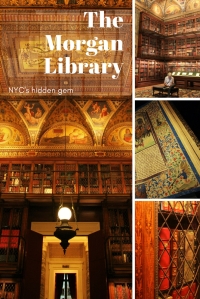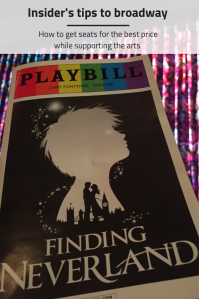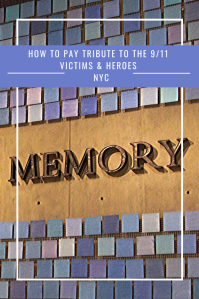While Henry Clay Frick and John Pierpont Morgan were amassing their art collections with the millions they made during the industrial revolution and setting the basis for the USA, a different story was taking place in the low income areas of New York City, like the Lower East Side where newcomers to the USA flocked by hundreds and also shaped the country.
97 Orchard Street, the Lower East Side of Manhattan, 1988
The Lower East Side is not yet the trendy area in which bars and restaurants are lined up. Ruth Abram is a historian and social activist, passionate about this immigrant district. She is looking for a space to run her walking tours from. Visiting a store front at 97 Orchard Street, she asks for the restrooms: she has to leave the store at the back to enter the building area to reach the toilets. Amazed, she realizes she has just discovered a time capsule! This building has been empty and untouched since 1935: this is the start of the Tenement Museum that retraces the story of several immigrant families between 1863 and 1935.
About 7 000 people lived at this address during these 72 years, with an average of about 6 people per each 30-square-metre flat. The staff of the tenement museum has been researching the tenants extensively to rewrite the history of some of these families thanks to census data, ship manifests, birth and death certificates, employment and city tax documents, interviewing children and grandchildren to help filling in the blanks… It takes an average of six years to recreate an apartment in which one of these families lived, making sure the exact same wall paper would be on the wall and gathering objects depicting what life was like during this period.
Let’s explore the time capsule…
97 Orchard Street, the Lower East Side of Manhattan, 1863
Natalie Gumpertz is a German Jew of 22 when she decides to leave everything she knows behind, and embarks alone on a ship to New York City. The USA is a big country that needs to get populated. Immigration is unrestricted when Natalie disembarks in the heart of the city. Many other Germans are setting foot in their new country, as she is. So many of them, that back then, the Lower East Side is known as Kleindeutschland or Little Germany, the first non-English speaking enclave in the USA!
Natalie meets Julius, also from Prussia. They get married. They build a rather comfortable working class life for themselves and their 4 children at 97 Orchard Street as witnessed by the nice wallpaper in their living room. Regularly, they go down to the beer saloon downstairs held by the Schneiders. Many other German-speaking newcomers enjoy the beer and free lunch. Natalie likes it: pretzels, sausages, sauerkraut, potatoes… It feels like home! The food is good, but it is just a little bit too salty for Natalie. To Caroline Schneider, the excellent cook, it is just salty enough for patrons to keep ordering more beer! And as the water is not drinkable anyway, even kids drink pints, so it’s all the best for business!
Unfortunately, the great panic of 1873 hits the USA really hard. So hard that the president has to rely on the influential, rich and powerful banker JP Morgan to help solve the crisis from his elegant office of midtown Manhattan, just a few blocks north of Natalie & Julius’ flat. The unemployment rate skyrockets: Julius has a hard time finding a job. In 1874, one day, Julius vanishes. Natalie cannot find a trace of him. She doesn’t have many choices to support her children, as most jobs aren’t open to women. To generate an income, she becomes a dress maker, operating out of her Orchard Street apartment and helped by her 3 daughters. In the dark flat, next to the two windows looking down on the busy street, she constantly sews on her machine.
In 1883, her assumed late husband Julius inherits from his father in Prussia. Natalie is entitled to this money as Julius is still nowhere to be found, and uses it to move out of the LES to today’s Upper East Side.
97 Orchard Street, the Lower East Side of Manhattan, 1897
The street is busy in the most densely populated area of the USA. Women with traditional dresses from back home are heading to a pushcart to buy groceries for the evening dinner. Others have adapted more, wearing American dresses, maybe made by Natalie. Merchants haggle to sell their goods in a cacophony.
Jennie Levine is making her way back home with vegetables to prepare a hot soup to keep her family warm in their 30-square-metre flat during this cold winter evening. It is dark when she enters 97 Orchard Street: the corridor and ceiling are pitch black, as well as the walls because of the candles and coal fuelled stoves used by the other 110 renters. She runs outside to the toilets and thinks she will never get used to this horrendous smell. Luckily, one of the only four toilets is free. Then, she fills up a bucket of water she will need for the soup using the pump, the only water source of the building. She climbs up the stairs, holding the mahogany banister to keep her balance.
Back in her flat, her husband Harris is still working hard with his three employees, assembling pieces of fabrics to manufacture dresses in their sweat shop to the light of a few candles. Jennie is cooking in the room next to their improvised factory by day turned into kids’ bedroom by night and living room on Saturdays when they celebrate Sabbath, the only day off for this Jewish Polish family with 5 kids. The baby crib of her new born son she gave birth to in the adjacent bedroom (and last room of the flat) is next to the stove to keep him warm.
The LES is the heart of the garment industry: 70% of women’s and 40% of men’s clothes worn in the USA are manufactured in this district of NYC. The Levine’s garment shop has to compete against about 100 similar ones, just to count the ones along their block! It is tough for Harris to turn a profit. From their $12 a month apartment, they manufacture $10 dresses for the upper society that will be sold midtown at Macy’s or Bloomingdales’. 6 days a week. 10 hours per day, as Harris declares it to the inspection… Most likely 15 hours per day, at least during the high season.
In 1905, and shortly after gas lamps providing light are installed at 97 Orchard Street, Harris decides to close down his shop and leave the tenement to move to Brooklyn. There, he can get a bit more space for his family and a job at the factory. Soon, a new tenant will glue his own layer of wall paper on the walls of the Levine’s flat.
97 Orchard Street, the Lower East Side of Manhattan, 1934
The Baldizzis are from Sicily, Italy. If for the Gumpertzs and the Levines, immigrating to the USA meant stepping off the boat, since 1900, immigrants are recorded officially upon arrival at Ellis Island. Worse for the Baldizzis, since 1924, the Johnson-Reed act limits immigration, especially from Southern or Eastern Europe (and it will last until 1965). Most likely, the Baldizzi family arrived in the US as illegal immigrants.
Life is tough during this depression period. Their flat at 97 Orchard Street is rather comfortable though: cold but running water run from the tap in their kitchen, a small bathtub to wash their two kids in next to it which they cover with a plank to serve as a working area the rest of the time, and a gas metre that delivers one hour worth of electricity or gas for every quarter they put in. Mr. Baldizzi also glued a new wall paper on the wall and a new linoleum on the floor, topping off the 9 other layers, each a witness of a specific family that used to live in this apartment before. The added layer makes the floor a bit softer when he kneels down to work on the wooden cabinet he is building to display the radio. Soon, the family will be able to listen to Italian operas feeling a bit closer to Sicily, especially when Mrs. Baldizzi cooks delicious meals from home! Building this cabinet makes him happy and is a nice change for him from the miserable little jobs he hunts for during the day with his toolbox on his shoulder. Even if he used to be a fine woodworker, the depression era makes it impossible for him to practice his craft for a living. Anything will do in order to pay the $30 rent a month.
But the Baldizzis have just received a letter from their landlord: they are evicted from the building and have two weeks to leave…
97 Orchard Street, the Lower East Side of Manhattan, 1935
The building act of 1935 has just been enforced, and this would generate too much of an investment for the landlord of 97 Orchard Street: running water, more windows… He has just given a two-week notice to all of his tenants to leave the tenement, but for the shops running at street level. For the next 53 years, only these shops will operate in the five-story building, protecting it from squatters.
The Baldizzis will cross the East River and move to Brooklyn.
97 Orchard Street, the Lower East Side of Manhattan, today
As we are walking the LES, many buildings look the same: the characteristic metal fire escape, a store front at the street level, five stories with four 30-square-metre apartments on each floor with a kitchen, a bedroom and a living room. The design worked, so builders just reproduced it over and over throughout the neighbourhood giving it a consistency and charm today. Despite this similarity, every flat has been a witness to singular stories of immigrants who have shaped New York City.
Today, one of the best ways to follow the footsteps of these generations of newcomers, beyond visiting the Tenement Museum, may be to sample the eclectic food they took with them and adapted to North American tastes: bagels, schnitzels, pickles, Asian bakeries, Greek restaurants, Puerto Rican treats… Whatever the time period, and even today, every bite in a treat from home takes one back a little closer to home…
Claire
Travel tips:
- The museum of 97 Orchard Street can be visited only as part of a tour. Make sure to book ahead of time, ideally about a month prior.
- Walking tours run by the tenement museum are also available in order to discover the LES.
- To get the GPS-powered version of this article in GPSmyCity, click on this link!
- Check out this interactive map (quick tutorial) for the specific details to help you plan your trip and more articles and photos (zoom out) about the area!
Like it? Pin it!
For more in NYC:































Cool blog! Is your theme custom made or did you download it from somewhere? A theme like yours with a few simple adjustements would really make my blog jump out. Please let me know where you got your theme. Cheers